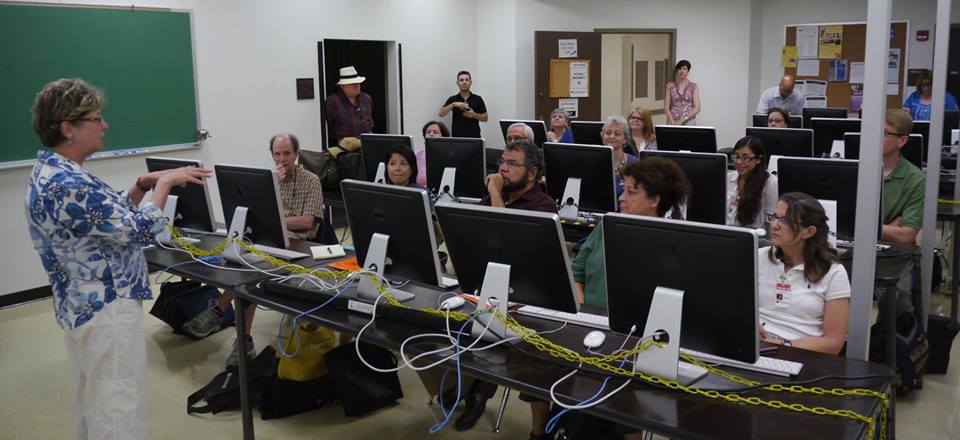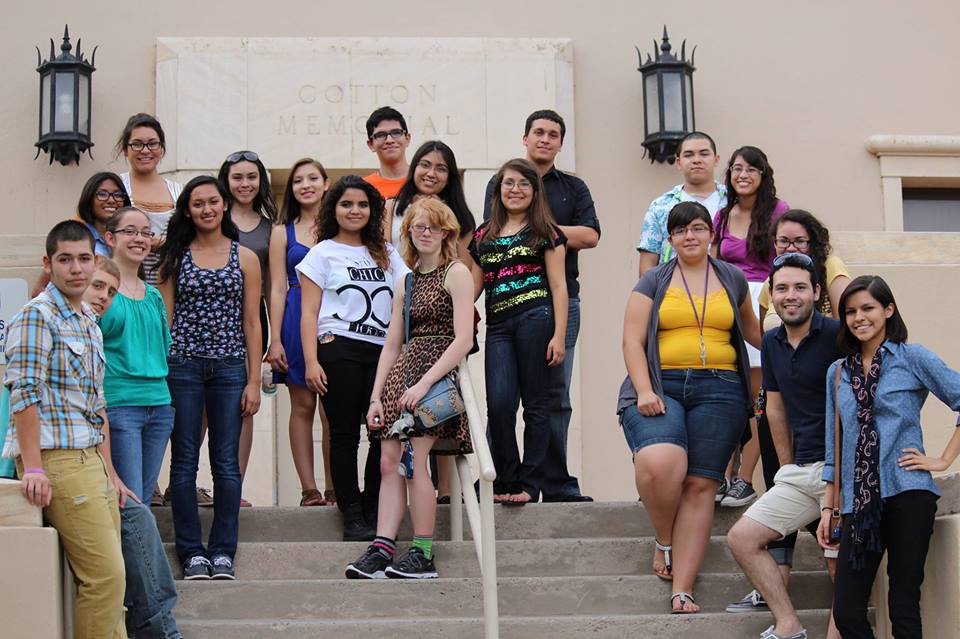Dear Borderzine friends,
As we begin 2014, I’m delighted to share with you changes and opportunities that are ‘a coming.’ They include a collaborative education-news media venture that builds on the successful McCormick funded Immigration Reporting Institute held at UTEP last fall, as well as a new look and redesign for our website and continuation of two successful grant-funded training workshops.

Borderzine's director, Zita Arocha, welcomes participants to the 2013 Dow Jones Multimedia Training Academy. (©Borderzine.com)
The Dow Jones Multimedia Training Academy for journalism teachers from Hispanic serving colleges returns to the UTEP campus for a fifth year, and Borderzine will host an 11th annual Journalism in July workshop for high school journalists, also supported by the Dow Jones News Fund.
We are also excited by plans for Borderzine to provide a weekend of training for local media professionals on how to use digital media production to create journalism content. Watch for details soon.
McCormick Immigration Reporting Institute

Participants of the 2013 McCormick Immigration Reporting institute. (©Borderzine.com)
Before going into more detail for 2014, I’d like to reflect on the successful Immigration Training Institute for 19 professional journalists and freelancers from the U.S. and the El Paso community. The journalists (which included two UTEP multimedia journalism students) engaged in hands-on training in how to use research tools for immigration reporting, learned the ins and outs of immigration policies and efforts at reform, took a tour with the Border Patrol and visited the border fence that divides the Anapra community near downtown El Paso.
Although the training was important, to me the real impact began after the journalists left town and started writing immigration stories about their hometowns. Their articles, as well as those written by UTEP students in an investigative reporting class last fall, are being republished in Borderzine. We are also able to share a Poynter webinar that shares some of the content from the training institute. Time will tell if the work done by the journalists has sparked change and produced a lasting impact on people, policies and organizations, locally and nationally.
Borderzine is currently developing an idea to partner with a media outlet for a project using databases, mapping, Social Media and other online tools to track and identify undocumented immigrants who are missing or dead. More details on this will be forthcoming soon.
Borderzine redesign
In the midst of our semester-long publication cycles and various scheduled trainings, we turned our attention last fall to the need for a fresher look, easier navigation and interactive features on the Borderzine website. Following a series of focus groups with readers and student journalists that were conducted by Public Relations Professor Eli Garcia with assistance from Angel Cancino, our program assistant, we are now ready to take the findings to the next stage by hiring a web design consultant to implement the changes. We hope to unveil the new look in late spring or early summer. We’ll keep you posted.
Resource needs for Borderzine and student internships
I need not belabor the fact that the projects and changes detailed above will require appropriate levels of funding beyond the university’s support for our journalism faculty salaries and lab equipment.

High school students from El Paso, Las Cruces and Ciudad Juarez participated on the 2013 Journalism in July summer camp. (©Borderzine.com)
In addition to applying for additional grants for special projects such as the education-news media collaboration on immigration, we plan to explore strategies for raising unrestricted dollars to help fund the website redesign, launch a marketing campaign, and funds to provide additional internships for our multimedia journalism graduates. You can make a donation here.
Although we have established an internship pipeline with some media companies like Al Dia in Philadelphia and every year Borderzine receives several internship stipends for our students from the Scripps Howard Foundation, which has a strong commitment to diversity in news media, these opportunities are not enough to ensure all of our journalism juniors and seniors (many of them work and attend school fulltime) have the opportunity to participate in a paid out-of-town internship. This is a goal I take seriously. Without credible internship experience our journalism graduates are as unlikely to find a job as a doctor who hasn’t completed a residency.
As always thank you for your continued support. The road to creating a vibrant pipeline of prepared journalism graduates for jobs in 21st century news media beckons. We can make this happen but much more work looms head.
Adelante,
Zita Arocha
Director
Borderzine.com



Impressed with the evolution of this program over the years, I have a daughter who is a UTEP graduate now working successfully in the profession she chose to attest to the quality of the program. I salute your staff, your current students and expect future generations of students will also give excellent accounts of themselves thanks to this program. I will donate $100.00 as soon as I submit this comment.